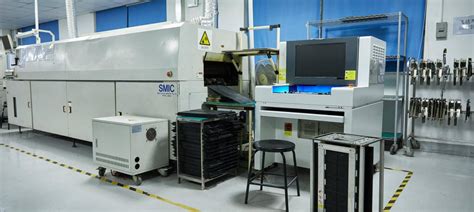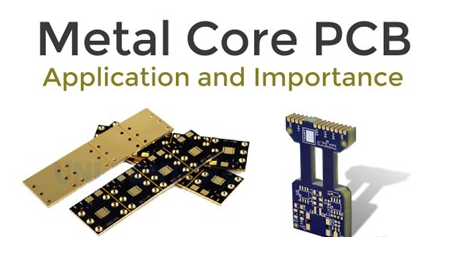Multilayer pcb printer
Understanding Thermal Conductivity in Multilayer PCBs: Key Factors and Considerations
In the realm of modern electronics, multilayer printed circuit boards (PCBs) have become indispensable due to their ability to support complex circuitry in a compact form. As electronic devices continue to shrink in size while increasing in functionality, the thermal management of these multilayer PCBs has emerged as a critical consideration.
Understanding the thermal conductivity of multilayer PCBs is essential for ensuring the reliability and performance of electronic devices.
Thermal conductivity, in essence, refers to a material’s ability to conduct heat. In the context of multilayer PCBs, it is a crucial parameter that influences how efficiently heat generated by electronic components is dissipated. This is particularly important because excessive heat can lead to component failure, reduced performance, and shortened device lifespan. Therefore, selecting materials with appropriate thermal conductivity is vital in the design and manufacturing of multilayer PCBs.
One of the primary factors affecting thermal conductivity in multilayer PCBs is the choice of substrate material.
Commonly used materials include FR-4, a glass-reinforced epoxy laminate, which is favored for its cost-effectiveness and mechanical properties. However, FR-4 has relatively low thermal conductivity, which can be a limitation in high-power applications. To address this, alternative materials such as metal-core PCBs or ceramic substrates are often employed. These materials offer higher thermal conductivity, enabling more efficient heat dissipation.
Moreover, the arrangement and thickness of copper layers within the PCB also play a significant role in thermal management.
Copper, known for its excellent thermal conductivity, is used extensively in PCBs to create conductive pathways. By optimizing the thickness and distribution of copper layers, designers can enhance the thermal performance of the PCB. This is particularly beneficial in multilayer designs, where heat generated by densely packed components can be effectively spread across the board.
In addition to material selection and copper layer configuration, the use of thermal vias is another strategy to improve thermal conductivity in multilayer PCBs.
Thermal vias are plated holes that connect different layers of the PCB, facilitating the transfer of heat from the surface to the inner layers or to a heat sink. By strategically placing thermal vias near heat-generating components, designers can create efficient thermal pathways, thereby reducing hotspots and improving overall thermal management. Furthermore, the integration of thermal interface materials (TIMs) can significantly enhance the thermal conductivity of multilayer PCBs. TIMs are used to fill gaps between heat-generating components and heat sinks, ensuring optimal thermal contact. These materials, which include thermal pads, greases, and adhesives, are designed to have high thermal conductivity, thereby improving heat transfer and reducing thermal resistance.
While understanding the factors influencing thermal conductivity is crucial, it is equally important to consider the trade-offs involved.
For instance, materials with higher thermal conductivity may be more expensive or less mechanically robust. Therefore, designers must carefully balance thermal performance with other considerations such as cost, mechanical strength, and electrical properties. In conclusion, the thermal conductivity of multilayer PCBs is a multifaceted aspect that requires careful consideration of various factors, including material selection, copper layer configuration, and the use of thermal vias and interface materials. By optimizing these elements, designers can ensure efficient thermal management, thereby enhancing the reliability and performance of electronic devices. As technology continues to advance, the importance of understanding and managing thermal conductivity in multilayer PCBs will only grow, underscoring its significance in the field of electronics design and manufacturing.
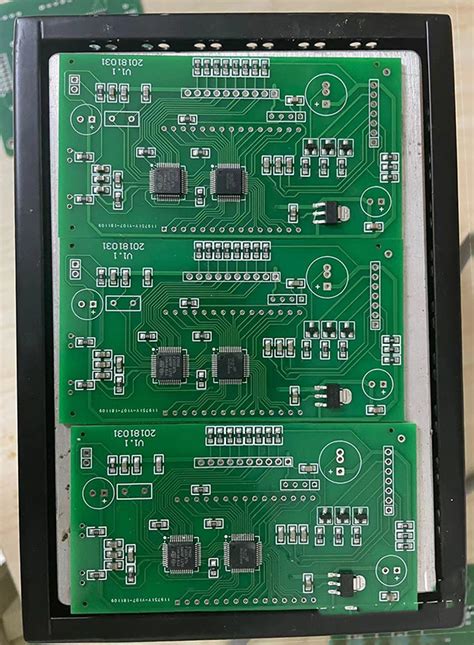
Enhancing Thermal Management in Multilayer PCBs: Techniques and Materials
In the realm of modern electronics, multilayer printed circuit boards (PCBs) have become indispensable due to their ability to support complex circuitry in a compact form. However, as electronic devices become more powerful and compact, managing the heat generated by these components has become a critical challenge. Effective thermal management in multilayer PCBs is essential to ensure reliability, performance, and longevity of electronic devices. Consequently, understanding and enhancing the thermal conductivity of these PCBs is of paramount importance.
To begin with, thermal conductivity in multilayer PCBs is influenced by several factors, including the materials used, the design of the PCB, and the techniques employed during manufacturing.
The choice of substrate material plays a crucial role in determining the thermal performance of a PCB. Traditionally, FR-4, a glass-reinforced epoxy laminate, has been the standard material for PCB substrates. However, its relatively low thermal conductivity poses limitations in high-power applications. To address this, alternative materials such as metal-core PCBs, ceramic substrates, and high thermal conductivity laminates are increasingly being used. These materials offer superior thermal performance, allowing for more efficient heat dissipation.
In addition to material selection, the design of the PCB itself can significantly impact thermal management.
One effective design strategy is the incorporation of thermal vias, which are vertical interconnections that facilitate heat transfer from the surface layers to the inner layers or to a heat sink. By strategically placing thermal vias in areas of high heat generation, designers can enhance the overall thermal conductivity of the PCB. Furthermore, optimizing the copper thickness in the PCB layers can also contribute to better heat dissipation. Thicker copper layers provide lower thermal resistance, thereby improving the board’s ability to conduct heat away from critical components.
Moreover, advanced manufacturing techniques have been developed to further enhance the thermal management capabilities of multilayer PCBs.
For instance, the use of embedded heat pipes or vapor chambers within the PCB structure can significantly improve heat transfer efficiency. These technologies leverage phase change materials to rapidly spread heat across the board, thereby reducing hotspots and maintaining uniform temperature distribution. Additionally, the integration of thermal interface materials (TIMs) between the PCB and heat sinks or other cooling solutions can further enhance thermal conductivity. TIMs are designed to fill microscopic air gaps and improve the thermal interface between surfaces, thus facilitating more efficient heat transfer.
Furthermore, simulation and modeling tools have become invaluable in optimizing the thermal performance of multilayer PCBs.
By employing computational fluid dynamics (CFD) and finite element analysis (FEA), engineers can predict and analyze heat distribution patterns within the PCB. This allows for the identification of potential thermal issues and the implementation of design modifications before physical prototyping, ultimately saving time and resources.
In conclusion, enhancing thermal management in multilayer PCBs is a multifaceted challenge that requires a comprehensive approach. By carefully selecting materials with high thermal conductivity, employing strategic design techniques, and utilizing advanced manufacturing processes, engineers can significantly improve the thermal performance of these critical components. As electronic devices continue to evolve, the importance of effective thermal management in multilayer PCBs will only grow, underscoring the need for ongoing research and innovation in this field.
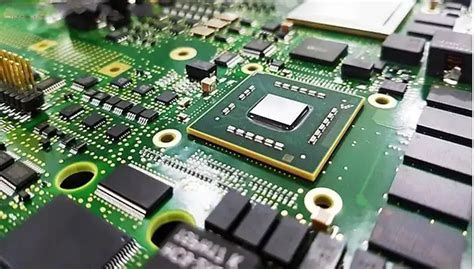
The Role of Thermal Conductivity in Multilayer PCB Design for High-Power Applications
In the realm of high-power applications, the design of multilayer printed circuit boards (PCBs) necessitates a meticulous consideration of thermal conductivity. As electronic devices become increasingly compact and powerful, the ability to efficiently manage heat dissipation is paramount. Multilayer PCBs, with their complex architecture, offer a versatile platform for integrating numerous electronic components. However, this complexity also introduces challenges in thermal management, making the role of thermal conductivity a critical factor in ensuring the reliability and performance of these systems.
Thermal conductivity in multilayer PCBs refers to the material’s ability to conduct heat away from heat-generating components.
In high-power applications, components such as processors, power transistors, and LEDs can generate significant amounts of heat. If not properly managed, this heat can lead to elevated temperatures, which may cause component failure, reduced performance, or even catastrophic damage. Therefore, selecting materials with high thermal conductivity is essential to facilitate efficient heat transfer and maintain optimal operating temperatures.
The choice of substrate material plays a pivotal role in determining the thermal conductivity of a multilayer PCB.
Common materials such as FR-4, a glass-reinforced epoxy laminate, offer adequate electrical insulation but have relatively low thermal conductivity. In contrast, materials like metal-core PCBs, which incorporate a metal layer such as aluminum or copper, provide superior thermal performance. These metal layers act as heat spreaders, distributing heat more evenly across the board and reducing thermal hotspots. Consequently, designers often opt for metal-core PCBs in high-power applications where thermal management is a primary concern.
Moreover, the arrangement and thickness of copper layers within the PCB also significantly impact thermal conductivity.
Copper, known for its excellent thermal and electrical conductivity, is commonly used in the internal layers of multilayer PCBs. By increasing the thickness of these copper layers, designers can enhance the board’s ability to conduct heat. Additionally, strategically placing thermal vias—small, plated holes that connect different layers—can further improve heat dissipation by providing a direct path for heat to travel from the surface to the inner layers or to a heat sink.
In addition to material selection and layer configuration, the design of the PCB layout itself influences thermal conductivity.
Components that generate substantial heat should be placed in areas where heat can be effectively dissipated, such as near the edges of the board or adjacent to heat sinks. Furthermore, the use of thermal pads and heat spreaders can aid in transferring heat away from critical components. By optimizing the layout, designers can minimize thermal resistance and enhance the overall thermal performance of the PCB.
As the demand for high-power electronic devices continues to grow, the importance of thermal conductivity in multilayer PCB design cannot be overstated. Effective thermal management not only ensures the longevity and reliability of electronic components but also enables devices to operate at peak performance. By carefully selecting materials, configuring layers, and optimizing layouts, designers can create multilayer PCBs that meet the rigorous thermal demands of modern high-power applications. In doing so, they pave the way for the development of more efficient, powerful, and compact electronic devices that can withstand the thermal challenges of today’s technological landscape.
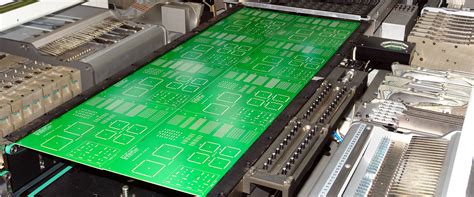
Comparing Thermal Conductivity in Single-Layer vs. Multilayer PCBs: Benefits and Challenges
In the realm of electronic design, the choice between single-layer and multilayer printed circuit boards (PCBs) is pivotal, particularly when considering thermal conductivity. As electronic devices become increasingly compact and powerful, managing heat dissipation effectively is crucial to ensure reliability and performance. Single-layer PCBs, characterized by their simplicity, offer a straightforward approach to thermal management. However, as devices demand more complex circuitry, multilayer PCBs have emerged as a viable solution, offering enhanced thermal conductivity and other benefits.
To begin with, single-layer PCBs consist of a single conductive layer, typically made of copper, laminated onto a non-conductive substrate.
This simplicity allows for efficient heat dissipation across the board’s surface. However, the limited surface area and single conductive path can restrict the board’s ability to manage heat effectively, especially in high-power applications. In contrast, multilayer PCBs, which comprise multiple layers of conductive material separated by insulating layers, provide a more sophisticated approach to thermal management. The additional layers allow for more complex routing and increased surface area, which can significantly enhance thermal conductivity.
Moreover, the design flexibility inherent in multilayer PCBs allows engineers to strategically place thermal vias and heat sinks, further improving heat dissipation.
These features enable the board to handle higher power densities, making them ideal for advanced applications such as telecommunications, aerospace, and high-performance computing. However, this complexity also introduces challenges. The manufacturing process for multilayer PCBs is more intricate, requiring precise alignment and lamination of multiple layers. This complexity can lead to higher production costs and longer lead times compared to single-layer PCBs.
Despite these challenges, the benefits of multilayer PCBs in terms of thermal conductivity are undeniable.
The ability to incorporate multiple ground and power planes within the board not only improves thermal management but also enhances signal integrity and reduces electromagnetic interference. This is particularly advantageous in high-frequency applications where maintaining signal quality is paramount. Furthermore, the increased layer count allows for more compact designs, enabling the development of smaller, more efficient devices without compromising on performance.
In addition to these technical advantages, the use of advanced materials in multilayer PCBs can further enhance thermal conductivity.
High-performance substrates such as ceramic or metal-core materials offer superior thermal properties compared to traditional FR-4 substrates. These materials can significantly improve heat dissipation, making them suitable for applications with stringent thermal requirements. However, the selection of materials must be carefully considered, as it can impact the overall cost and manufacturability of the PCB.
In conclusion, while single-layer PCBs offer simplicity and cost-effectiveness, multilayer PCBs provide superior thermal conductivity and design flexibility, making them indispensable in modern electronic applications. The decision between single-layer and multilayer PCBs ultimately depends on the specific requirements of the application, including power density, size constraints, and budget considerations. As technology continues to evolve, the demand for efficient thermal management solutions will only increase, underscoring the importance of understanding the benefits and challenges associated with different PCB configurations. By carefully evaluating these factors, engineers can make informed decisions that optimize both performance and reliability in their electronic designs.


